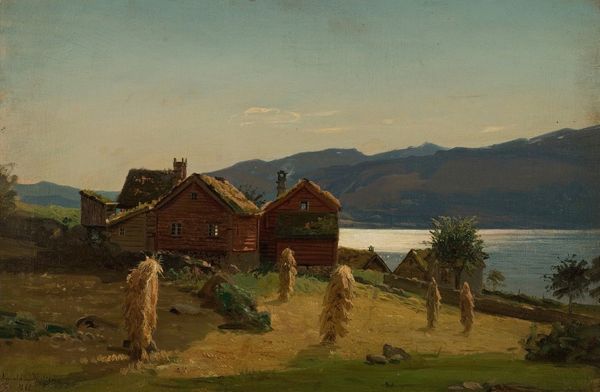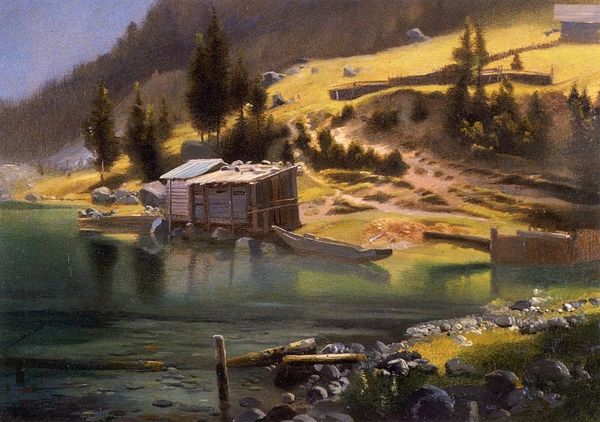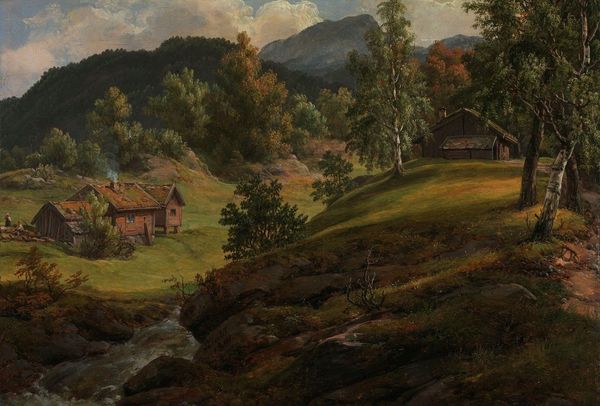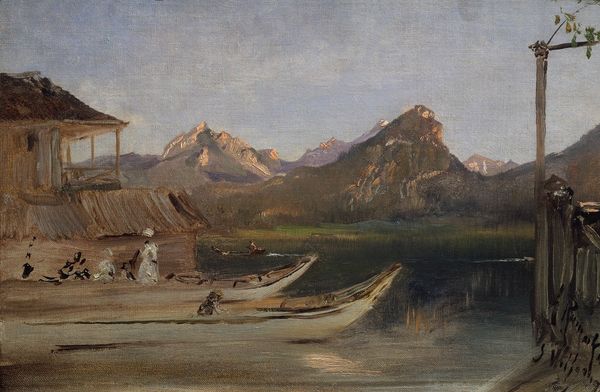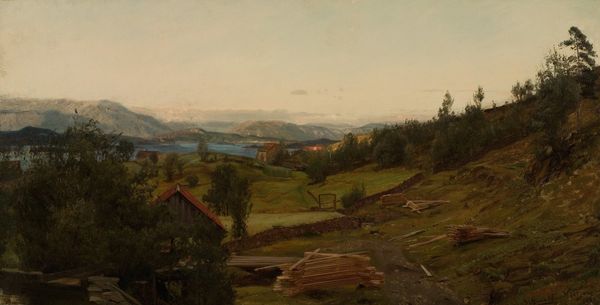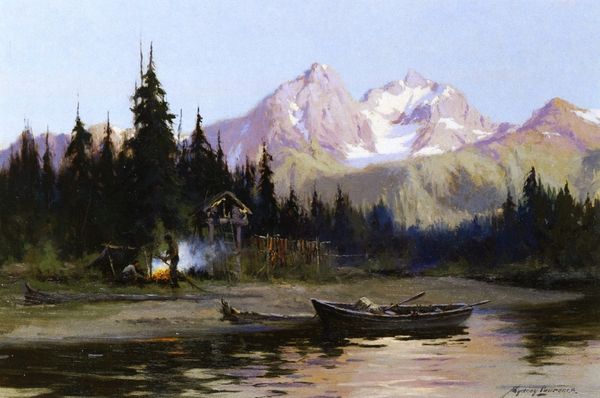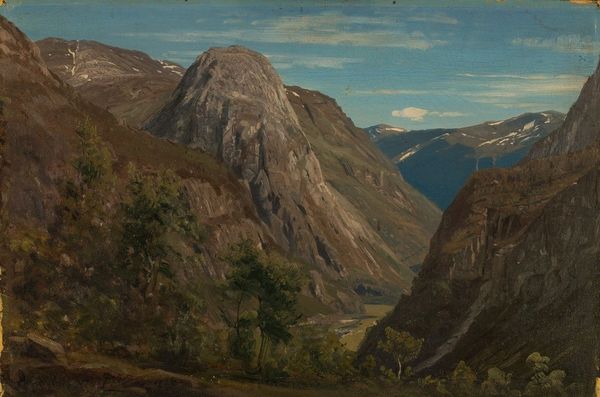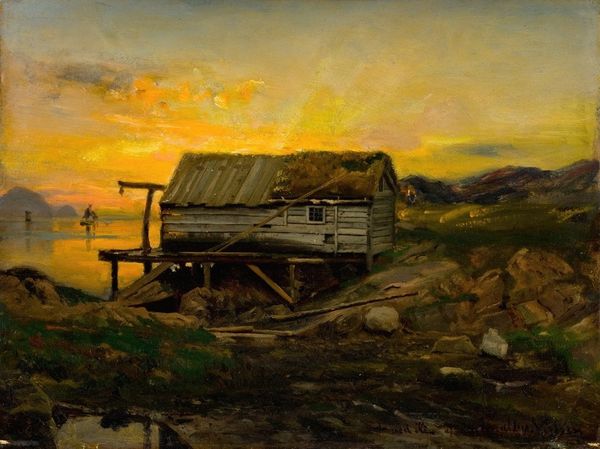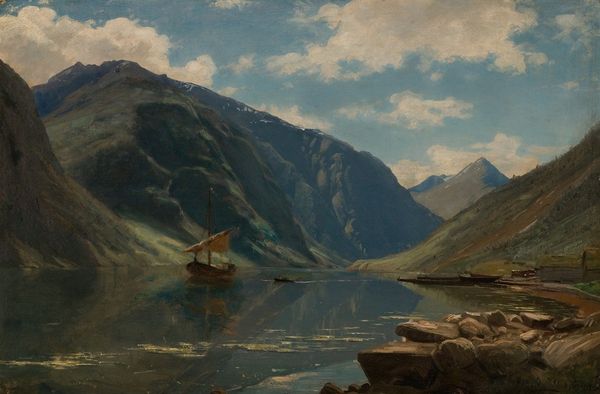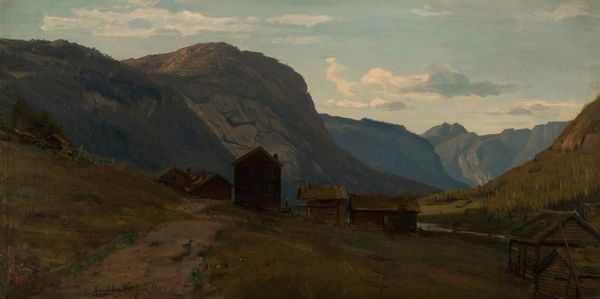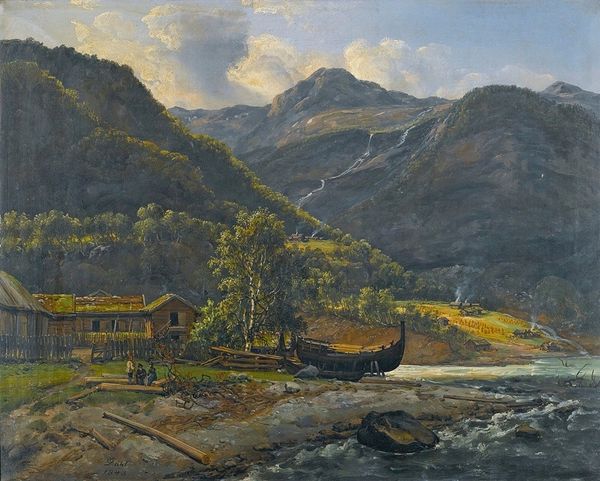
Copyright: Public Domain: Artvee
Curator: Welcome! We are standing before Amaldus Nielsen's 1865 oil painting, "Fra Eide, Hardanger". Editor: My goodness, what a majestic slumber! Those mountains draped in velvety blue… it feels like the whole scene is holding its breath. Curator: Nielsen was painting within the traditions of both Romanticism and Realism, a balancing act evident here. We have an idealised, almost heroic depiction of the Norwegian landscape, but it’s also rendered with a keen eye for detail—observe the texture of the wooden structures. Editor: Those little wooden buildings! They are adorable, each capped with tiny green toupees, and look like some trolls built them for their boats. I am captivated with the boats at dock and wonder where these hulls will travel to. It's as if the landscape itself is shipbuilding here. Curator: These structures likely served functional purposes, like protecting boats or storing fishing equipment. Nielsen presented scenes that celebrated the dignity of rural life. These boats were very much vital links for the Hardanger. He contributed towards fostering Norwegian national identity. Editor: Identity absolutely, but look closer, it transcends national, maybe it is nature that he's trying to reflect more that society's functions. It captures the silent dialogue between humans and the natural world; that building a structure with vegetation as roofing is one that coexists with nature, not trying to dominate it. Curator: It is difficult to overstate Nielsen's role in the development of Norwegian landscape painting during the mid-19th century. He received formal training, he also travelled, carefully studying nature which served to enrich his output, blending traditional artistic practices and direct observation. Editor: In a society speeding ahead on industrial time, artworks like these prompt us to simply… pause. Look. Listen, maybe there is a whisper or the scent of salt and timber… It’s the sort of painting that rewards contemplation. Curator: Indeed. A bridge between a romanticized vision and the everyday reality of 19th-century Norway. It speaks to enduring artistic engagement with our natural world, and a culture still trying to take pride in national landscape. Editor: And what a comforting view this glimpse gives us. Time for me to let those blue mountains envelop my thoughts now. Thank you. Curator: Our pleasure. Do come back and explore with us soon!
Comments
No comments
Be the first to comment and join the conversation on the ultimate creative platform.
